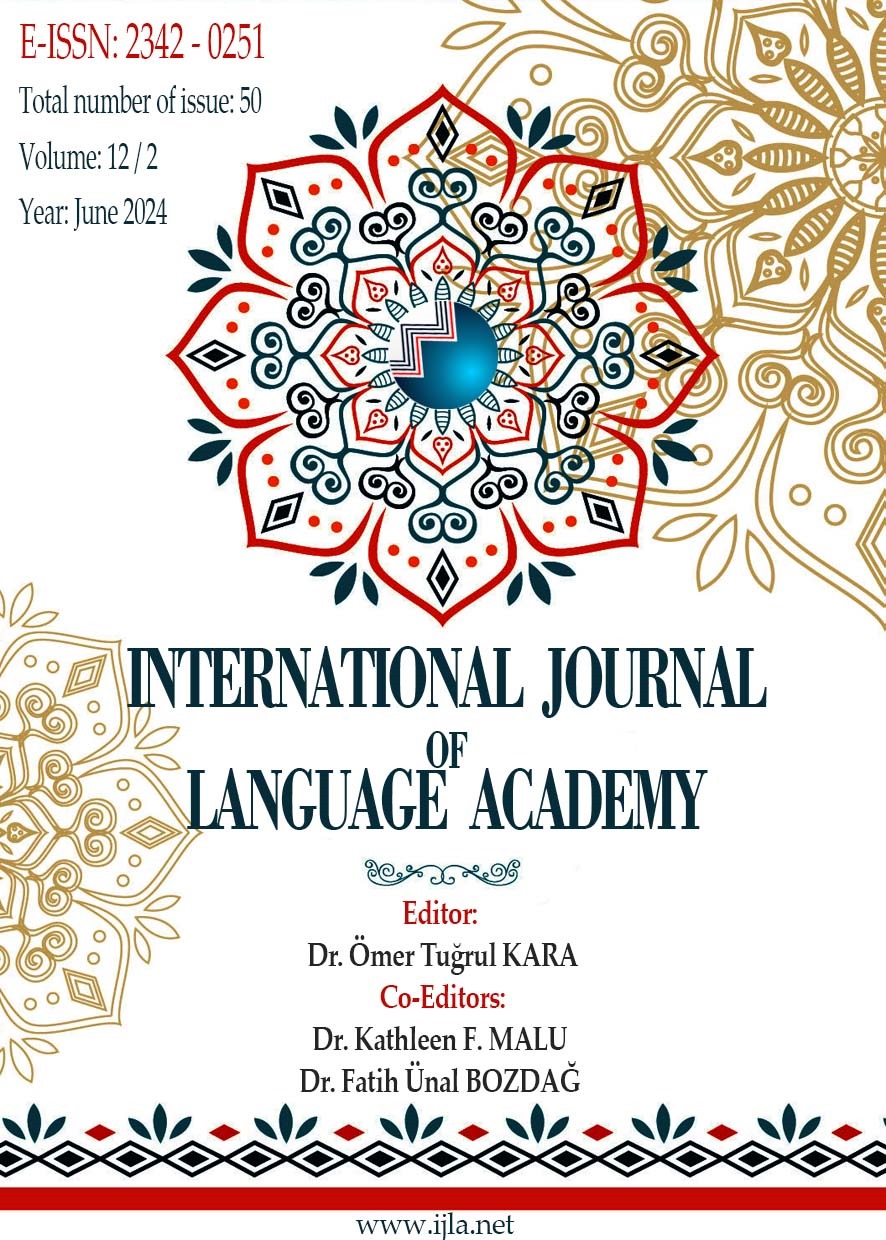Author :
Abstract
Yabancı dil olarak Türkçe öğrenme ve öğretme sürecinde etkili bir kaynak olan ders kitaplarının içeriği, teknik ve fiziksel özellikleri önemli bir yere sahiptir. Kitaplarda görsel kullanımı ise öğrenmeyi çabuklaştırır, etkili öğrenmeyi ve eğitimde giderek artan bir verimliliği sağlar. Bu bağlamda ders kitaplarında kullanılan görseller; verilen bilgilerin anlaşılması ve bu bilgilerin desteklenmesi, metin-resim bağlamında tutarlılık ve bütünselliğin sağlaması, akıl yürütme, açıklama, yorumlama gibi üst düzey bilişsel becerileri harekete geçirmesi gibi pek çok uyarıcı özelliğe sahiptir. Ders kitaplarında görsel algının seçiciliğini arttırarak şema, grafik, resim, tablo, fotoğraf gibi görsel malzemelerle dört temel dil becerisinin ölçümü daha nitelikli, motive edici ve kullanışlı bir hale getirilebilir. Bu çalışmada Gazi Üniversitesi Yabancılar İçin Türkçe, Ankara Üniversitesi Yeni Hitit Yabancılar İçin Türkçe ve Maarif Vakfı bünyesinde kullanılan Türkçeye Yolculuk A1 ders kitaplarındaki konuşma becerisi etkinliklerinde hangi tür görsel kullanımına yer verildiği ve görsellerin ne sıklıkta olduğu belirlenmiştir. Söz konusu kitaplardaki konuşma becerisinde kullanılan görseller, Brown (2004) ve Hughes (1989) tarafından yapılan sınıflandırmaya göre incelenmiştir. Görseller işlevleri bakımından 10 başlık altında toplanmıştır. Nitel araştırma yöntemine göre incelenen ders kitaplarında konuşma becerisinde kullanılan görsellere en fazla Gazi Üniversitesi Yabancılar İçin Türkçe, en az ise Türkçeye Yolculuk ders kitabında rastlanmıştır. “Resim/Tablo Üzerine Konuşma”, “Verilen Sözcükleri Resimdeki Objelerle Eşleştirme” ve “Dilbilgisini Ölçmede Resim Kullanımı” en sık kullanılan işlevler arasındadır. En az ise “Resim Üzerinden Öykü/Durum vb. Anlatımı” ve “Grafikte/Resimde Verilen Bilgiyi Yorumlama” işlevleri kullanılmıştır. Öğrenmenin yalın bir şekilde olmasını sağlayan, anlaşılması kolay görsellere ise hiç ya da az yer verilmesi olumsuz bir durum olarak ele alınmıştır.
Keywords
Abstract
The content, technical and physical features of textbooks, which are an effective resource in the process of learning and teaching Turkish as a foreign language, have an important place. The use of visuals in books helps to speed up learning, to ensure effective learning, and increase efficiency in education. In this context, the visuals used in textbooks have many stimulating features such as understanding, supporting the information given, providing coherence and integrity in the context of text-image, logical reasoning, and activating high-level cognitive skills such as explanation and interpretation. By increasing the selectivity of visual perception in textbooks, the measurement of the four basic language skills can be made more qualified, motivating, and useful with visual materials such as schemes, graphics, pictures, tables, and photographs. In this study, the types and frequency of visuals used in speaking skill activities in the Turkish for Foreigners A1 textbooks used by Gazi University Turkish for Foreigners, Ankara University Yeni Hitit Turkish for Foreigners and Maarif Foundation were determined. The visuals used in speaking skill activities in these books were analyzed according to the classification made by Brown (2004) and Hughes (1989). The visuals were categorized under 10 headings in terms of their functions. In the textbooks analyzed according to the qualitative research method, the visuals used in speaking skills were found the most in the Gazi University textbook and the least in the Türkçeye Yolculuk textbook. “Talking on picture/table”, “Matching the given words with the objects in the picture” and “Using Pictures to measure grammar” are among the most frequently used functions. The least commonly used functions were “Narrating a story/situation etc. through pictures” and “Interpreting the information given in a Graphic/Picture”. The fact that there is no or little space for easy-to-understand visuals that provide learning simply is considered a negative situation.





